
The 1904 Auburn Tigers football team represented Auburn University in the 1904 Southern Intercollegiate Athletic Association football season.
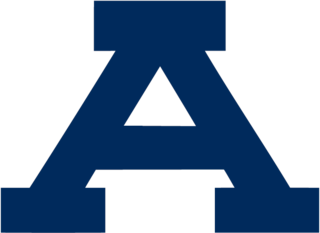
The 1908 Auburn Tigers football team represented Auburn University in the 1908 Southern Intercollegiate Athletic Association football season. The team went 6–1, outscoring opponents 158–10. Auburn featured a strong defense that held all but one opponent scoreless. The team was the first during the second term of coach Mike Donahue at Auburn.

The 1913 Auburn Tigers football team represented Auburn University in the 1913 Southern Intercollegiate Athletic Association football season. The Tigers were retroactively recognized as a national champion in 1999 by the Billingsley Report's alternative calculation which considers teams' margin of victory. The team was coached by Mike Donahue and was undefeated at 8–0, outscoring opponents 224–13.
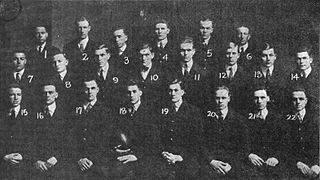
The 1914 Auburn Tigers football team represented Auburn University in the 1914 Southern Intercollegiate Athletic Association football season. It was the Tigers' 23rd overall season and they competed as a member of the Southern Intercollegiate Athletic Association (SIAA). The team was led by head coach Mike Donahue, in his 10th year, and played their home games at Drake Field in Auburn, Alabama. They finished as SIAA Champions with a record of eight wins, zero losses and one tie and outscored opponents 193–0.

The 1915 Auburn Tigers football team represented Auburn University in the 1915 Southern Intercollegiate Athletic Association football season. It was the Tigers' 24th season and they competed as a member of the Southern Intercollegiate Athletic Association (SIAA). The team was led by head coach Mike Donahue, in his 11th year, and played their home games at Drake Field in Auburn, Alabama. They finished with a record of six wins and two losses.

The 1916 Auburn Tigers football team represented Auburn University in the 1916 college football season. It was the Tigers' 25th overall season and they competed as a member of the Southern Intercollegiate Athletic Association (SIAA). The team was led by head coach Mike Donahue, in his 12th year, and played their home games at Drake Field in Auburn, Alabama. They finished with a record of six wins and two losses.

The 1919 Auburn Tigers football team represented Auburn University in the 1919 college football season. It was the Tigers' 28th overall season and they competed as a member of the Southern Intercollegiate Athletic Association (SIAA). The team was led by head coach Mike Donahue, in his 15th year, and played their home games at Drake Field in Auburn, Alabama. They finished with a record of eight wins and one loss and as SIAA champions.
The 1916 Georgia Bulldogs football team represented the University of Georgia during the 1916 Southern Intercollegiate Athletic Association football season. Led by seventh-year head coach W. A. Cunningham, the Bulldogs compiled an overall record of 6–3 with a mark of 5–2 in SIAA play. Tom Thrash was the team captain.
The 1919 Georgia Bulldogs football team represented the University of Georgia during the 1919 college football season. Georgia completed the season with a 4–2–3 record. The Bulldogs won their first four games, but struggled in the last five. The two losses came against Alabama and Auburn. This was W. A. Cunningham's last season as the head coach for Georgia. The record for the decade was the same as the coach's record: 43–18–9.
The 1917 Florida Gators football team represented the University of Florida during the 1917 college football season. The season was Alfred L. Buser's first of three as the head coach of the Florida Gators football team. The 1917 season was a disappointment; the team completed their football season with an SIAA conference record of 1–3 and an overall record of 2–4.
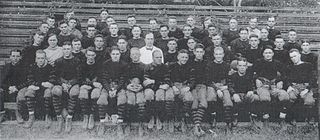
The 1920 Vanderbilt Commodores football team represented Vanderbilt University during the 1920 college football season. The team's head coach was Dan McGugin, who served his 16th season in that capacity. Members of the Southern Intercollegiate Athletic Association (SIAA), the Commodores played five home games in Nashville, Tennessee, and finished the season with a record 4–3–1 and 3–3 in the SIAA. The Commodores outscored their opponents, 134–124.
The 1919 Vanderbilt Commodores football team represented Vanderbilt University in the 1919 college football season. The 1919 season was Dan McGugin's 15th year as head coach. McGugin was returning from his stent in the Army during World War I where he was relieved by interim head coach Ray Morrison. Josh Cody was selected third-team All-America by Walter Camp, for the second time.
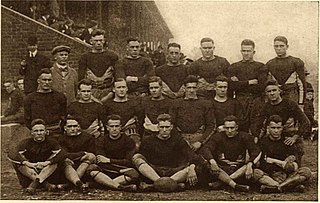
The 1917 Georgia Tech Golden Tornado football team represented the Georgia Institute of Technology in American football during the 1917 Southern Intercollegiate Athletic Association football season. The Golden Tornado, coached by John Heisman in his 14th year as head coach, compiled a 9–0 record and outscored opponents 491 to 17 on the way to its first national championship. Heisman considered the 1917 team his best, and for many years it was considered "the greatest football team the South had ever produced". The team was later named national champion by the Billingsley Report, Helms Athletic Foundation, Houlgate System, and National Championship Foundation.

The 1909 Sewanee Tigers football team represented Sewanee: The University of the South during the 1909 Southern Intercollegiate Athletic Association football season. The team was coached by Harris G. Cope in his 1st year as head coach, compiling a record of 6–1 and outscoring opponents 160 to 42 to win the Southern Intercollegiate Athletic Association title. Sewanee beat the previous season's champions LSU and Auburn, and upset rival Vanderbilt, handing the school its first loss to a Southern team in six years.
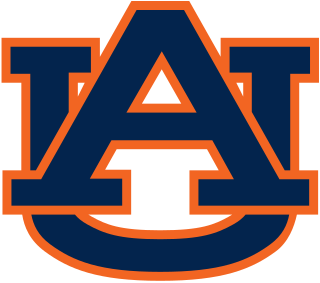
The Auburn–Georgia Tech football rivalry is an American college football rivalry between the Auburn Tigers and Georgia Tech Yellow Jackets. Auburn leads the series 47–41–4.
The 1917 Davidson Wildcats football team represented Davidson University in the 1917 college football season. Led by third year coach Bill Fetzer, the Wildcats competed as a member of the South Atlantic Intercollegiate Athletic Association (SAIAA). Despite a record of 6–4, some would call Davidson the second best southern team that year. Davidson defeated Auburn 21 to 7, in one of the great upsets in Southern football history, and scored the most on the 1917 Georgia Tech Golden Tornado, for many years considered the greatest football team the South ever produced, in a 32 to 10 loss. Following the Auburn game the Davidson team was first referred to as "the Wildcats.

The 1915 Georgia Tech Yellow Jackets football team represented the Georgia Tech Golden Tornado of the Georgia Institute of Technology during the 1915 college football season. The Tornado was coached by John Heisman in his 12th year as head coach, compiling a record of 7–0–1 and outscoring opponents 233 to 24. Georgia Tech played its home games at Grant Field. The Tech team claims a Southern championship, and had what was then the greatest season in its history.
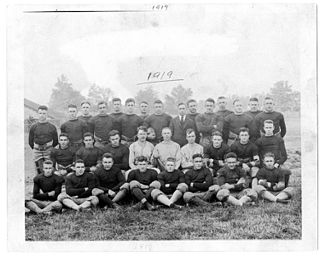
The 1919 Georgia Tech Golden Tornado football team represented the Georgia Tech Golden Tornado of the Georgia Institute of Technology during the 1919 Southern Intercollegiate Athletic Association football season. The Tornado was coached by John Heisman in his 15th year as head coach, compiling a record of 7–3 and outscoring opponents 257 to 33.
The 1922 Georgia Tech Golden Tornado football team represented the Georgia Tech Golden Tornado of the Georgia Institute of Technology during the 1922 Southern Conference football season. The Tornado was coached by William Alexander in his third year as head coach, compiling a record of 7–2 and outscoring opponents 157 to 59.
The 1924 Georgia Tech Golden Tornado football team represented the Georgia Tech Golden Tornado of the Georgia Institute of Technology during the 1924 Southern Conference football season. The Tornado was coached by William Alexander in his fifth year as head coach, compiling a record of 5–3–1 record.











